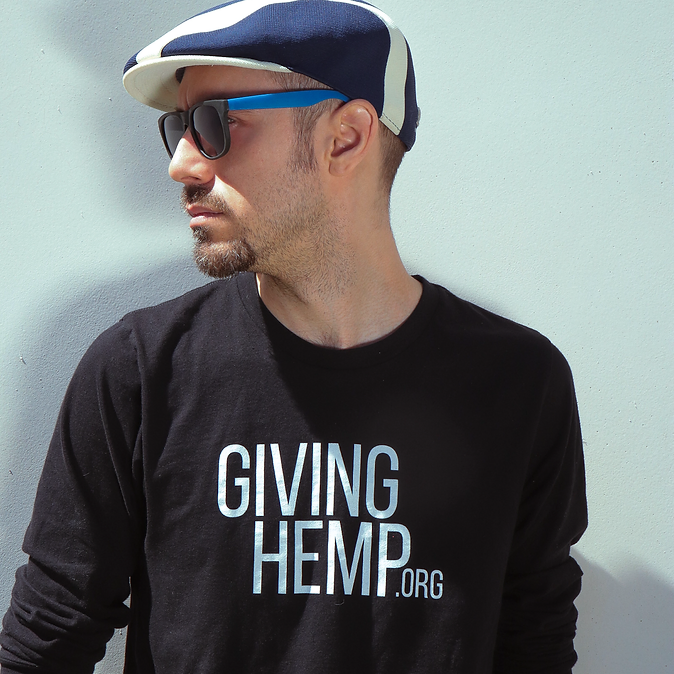
Did you know that in recent times more people are favorably disposed to using cannabis as a trusted alternative for cancer symptoms and treatment? Yes, there is a new narrative spearheaded by determined activists like Cody who will stop at nothing to ensure that cancer patients are no longer at the mercy of traditional “treatment”.
Cody is the longest-living glioblastoma brain cancer survivor at UT Southwestern in Dallas, Texas. When Cody was five years old, his father opened a restaurant in Panama City Beach, and the family moved to Florida.
But at eleven, Cody watched his world crumble before his eyes. His dad was diagnosed with colon cancer. So, the family had to move again for his cancer treatment at the University of Florida. Just starting sixth grade at the time, young Cody had to cope with the difficulties resulting from his dad’s treatment. Although the Hope Lodge afforded his dad accommodation during his treatment, the treatment was getting longer, and the family had to rent an apartment in the area.
This experience was not exciting for Cody. His family crammed a hospital bed into their apartment. And worse still, he saw his loving father losing weight, some hair, lots of scar tissue buildup and radiation damage. This continued into his teens until his father passed away.
Since Cody’s mom’s family lives in Dallas, he moved her back to the city so she could find solace and spend more time with her family. Alas! Cody would soon start to feel some twitches in his body. He noticed neurological-type symptoms and was experiencing hemifacial spasms.
At a point in time, he wondered if something was going on in his brain. But make no mistake; Cody was not scared of whatever condition his body might be going through. He was no coward. He just wasn’t bothered about the bodily reactions. According to Cody: “I wasn’t really paying attention and the twitches were happening. But so randomly, I remember thinking, “Is there something going on in my brain?” But then I also remember thinking that if it was, it would get progressively worse, and nothing had gotten worse. It was just a twitch here and there every once in a while. So, you know, I let it kind of go that way.”
Cody had a blackout seizure at work. The tumor had concentrated on the right side, weakening some the left side of his body. It was at this point that Cody realized he needed a medical diagnosis. At the hospital, the doctor revealed to Cody that he had a mass in his brain, better put as brain cancer.
One might wonder, how exactly did Cody come about using cannabis for cancer? When Cody’s father was undergoing cancer treatment, he used cannabis for appetite, sleep and pain. Cody was too young to understand the happenings. He was told that it was merely tobacco. But in middle school, his friends told him that he reeked of cannabis point blank.
Now, fast forward to when Cody was diagnosed with cancer. Doctors in Texas used to talk about cannabis as a drug in hush tones. But when Cody was going through treatment, and none of the prescribed anti-nausea medications were working, the doctors recommended Marinol, the pharmaceutical version of cannabis. Later, Cody researched and discovered on Cancer.gov how cannabinoids could delay or prevent tumor progression in the brain. He discovered that THC causes cancer cell death through a process known as apoptosis.
Cody’s decision to help cancer patients with cannabis was sealed when he heard about a Canadian, Rick Simpson. Rick had revealed in a documentary how he used cannabis extract for his skin cancer treatment, and this went viral. Cody notes: “So there’s a guy named Rick Simpson, and he’s from Canada, and there was a documentary made about him. He used some cannabis extract to treat his skin cancer. And then the documentary got out and everybody’s talking about RSO or Rick Simpson Oil. If you look up cannabis oil for cancer treatment, you are going to come across Rick Simpson Oil or RSO. He doesn’t sell it himself. He’s just the guy that got interviewed in the documentary. But everybody is starting to talk about that.”
This documentary was the push Cody needed to start his activism on making Cannabis and Cannabis extracts directly available for cancer patients. Cody’s non-profit program involves partnering with farmers in Texas. Farmers donate a percentage of their canopy space to Cody’s non-profit organization. The harvest is taken and sent to a laboratory for processing, and then transferred to Cody’s team. The organization, therefore, makes it available to needy patients.
Cody’s activism and philanthropic efforts are not without hiccups and criticisms. For one, politicians have reiterated that there is no sufficient data to prove the efficacy of cannabis for cancer treatment and that more research is needed. Cody disagrees with this perspective. He maintains the following position: “These politicians have a sound mind and they can read the research and they can put the dots together. But really their go-to phrase is ‘we need more research’ and then you ask them what is more research? They say clinical trials and say, when can we have clinical trials? And they say, well, ‘we need more research.’ This is super sad.”
Cody’s plan requests that participants share their status while taking the hemp extracts. His team is working on a mobile app to this effect. Cody says his program will not infringe on patients’ personal information rights. They can give as much or as little information as they want to. The focus here is to get sufficient patient-reported feedback to help legislators and subsequent patients believe in the alternative method and give them hope: “I really would like to have your return data so we can follow you. That way, we can have case studies.”
Being a cancer survivor himself, Cody is not concerned with making money from his efforts. His passion is to give back to the community. Currently, Hemp it Forward, the nonprofit, is working on building the organization and its team in Texas. For Cody, the science is clear. Cancer patients can consistently take hemp-based cannabinoids and don’t have to be intoxicated.

